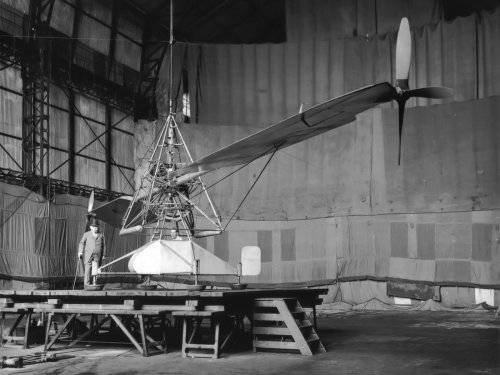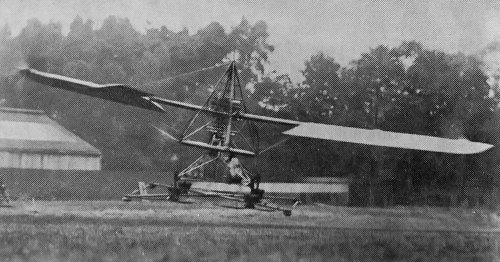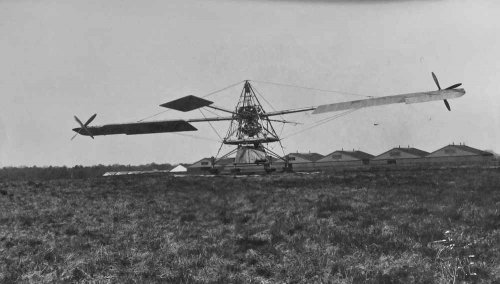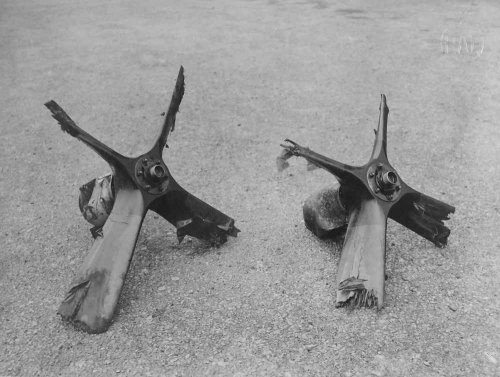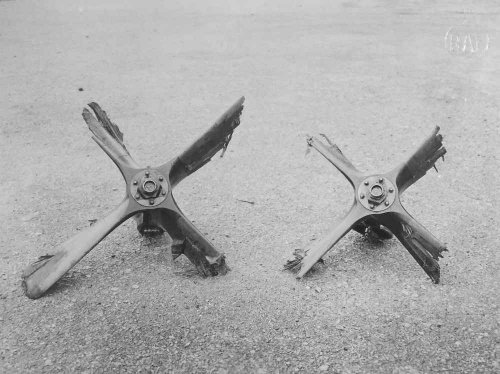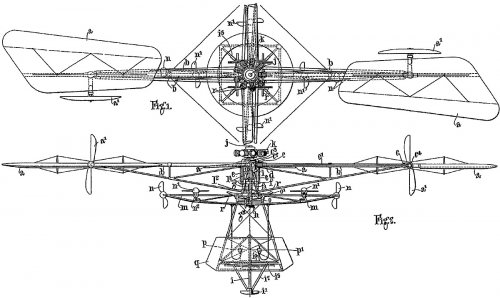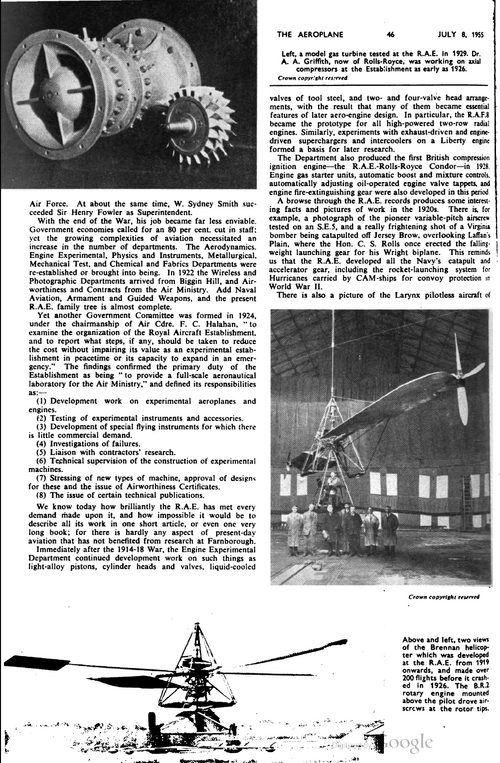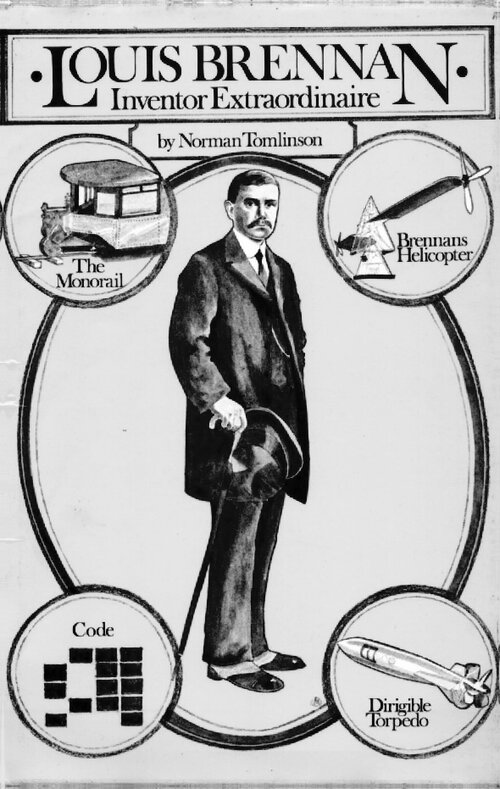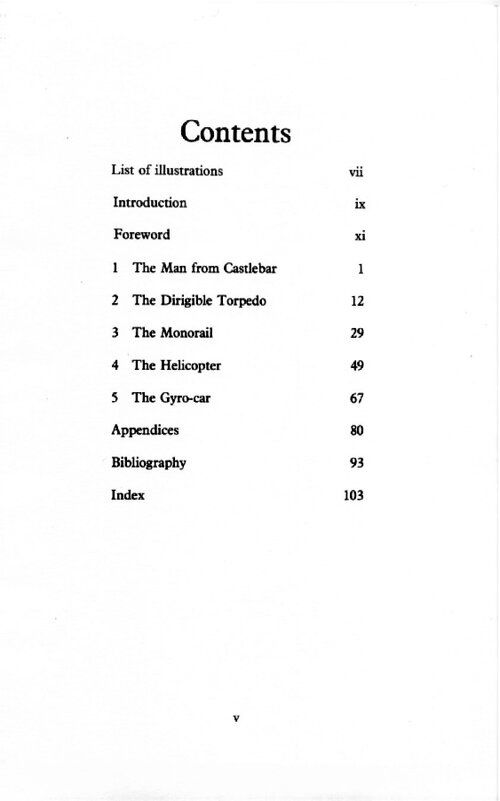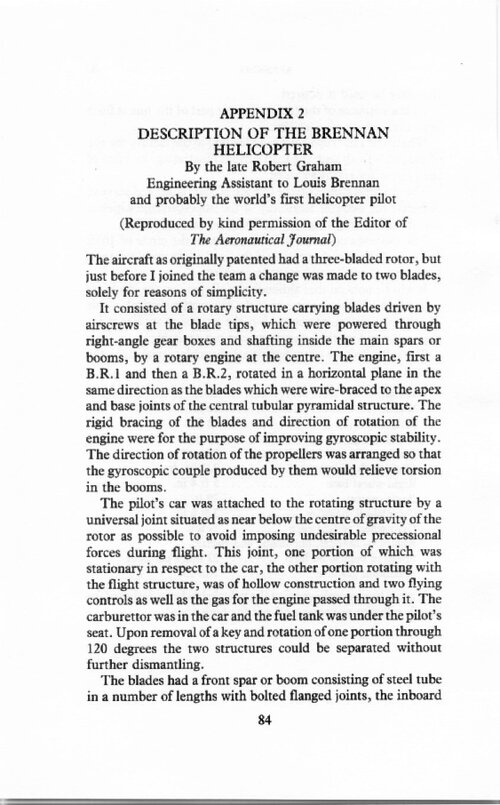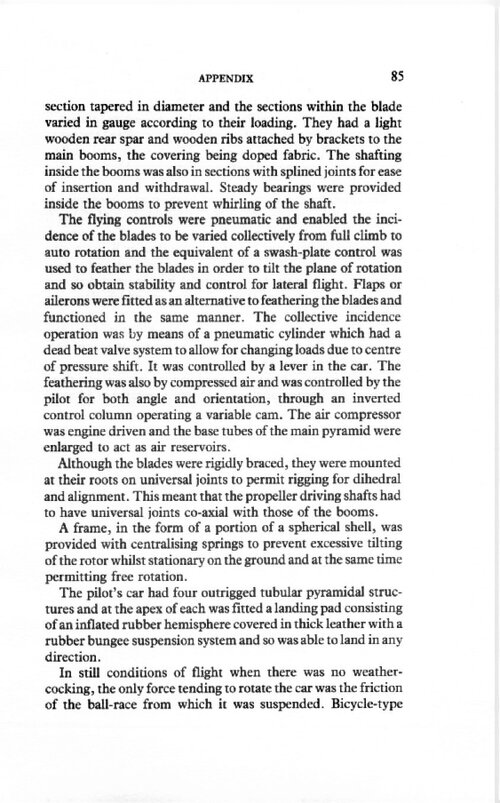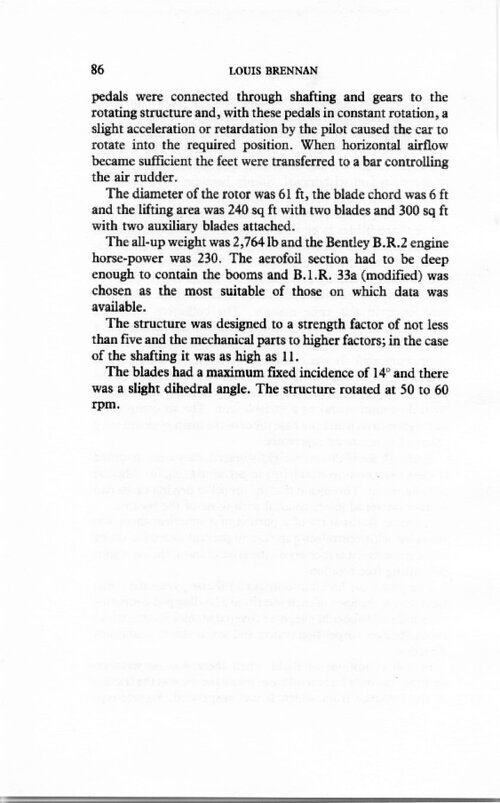From the same source, an extract from the RAE report into the crash of the Brennan helicopter:
The tests commenced at 9.26 a.m and the accident occurred on the 4th flight which took place at 10.50 a.m. On this flight the helicopter rose to a height of between 3 ft and 4 ft. On reaching this height the pilot throttled down and commenced to descend almost immediately. On the descent a tilt of the axis developed and increased rapidly as the ground was approached. Two feet of the undercarriage touched ground together and almost simultaneously one airscrew came into contact with the ground. The second airscrew, following up, hit the ground approximately at the same position as the first, but with greater force. The first airscrew then struck the ground for a second time at approximately the same position. A subsidiary vane next touched ground and after this the helicopter slowed down and partly righted itself so that no wing structure was in contact with the ground when it came to rest. From the evidence it appears that the engine raced about the time that the second airscrew struck the ground. After this the engine was almost immediately switched off.
On the flight in question Mr. Graham found that prior to leaving the ground, the helicopter showed a slight tendency to tilt but this was easily corrected by the controls. When the machine was steady he opened the throttle and rose vertically to a height of three or four feet. The helicopter was steady and the axis approximately vertical at this height. The engine was then throttled down to about half-throttle and after the usual lag the helicopter commenced to descend. During the descent the axis started to tilt, and, in spite of the application of full control, the tilt increased until an airscrew tip struck the ground. The pilot did not switch off until the engine raced, which, in his opinion, was after the second, or probably the third impact, with the ground.
During the descent he felt no unusual motion of the helicopter, and there was no feeling of an unbalanced load on the cockpit. The motion of the machine throughout ascent and descent, other than the tilt, was smooth and normal.
The only unusual feature of the flight was the absence of side-slip on the descent. When carrying out previous flights the descent of the helicopter was always accompanied by considerable side-slip if the height reached was three feet or over. On some occasions the side-slip exceeded thirty feet. On the test in question the side-slip was negligible and the helicopter descended almost to its starting point. Mr. Graham suggested that this might be explained by the tilt occurring so rapidly that side-slip had not time to develop before the helicopter toughed ground.
The rotational speed was about 52 r.p.m. on touching ground. There was no swing of the pilot's cabin relative to the ground on the descent.

